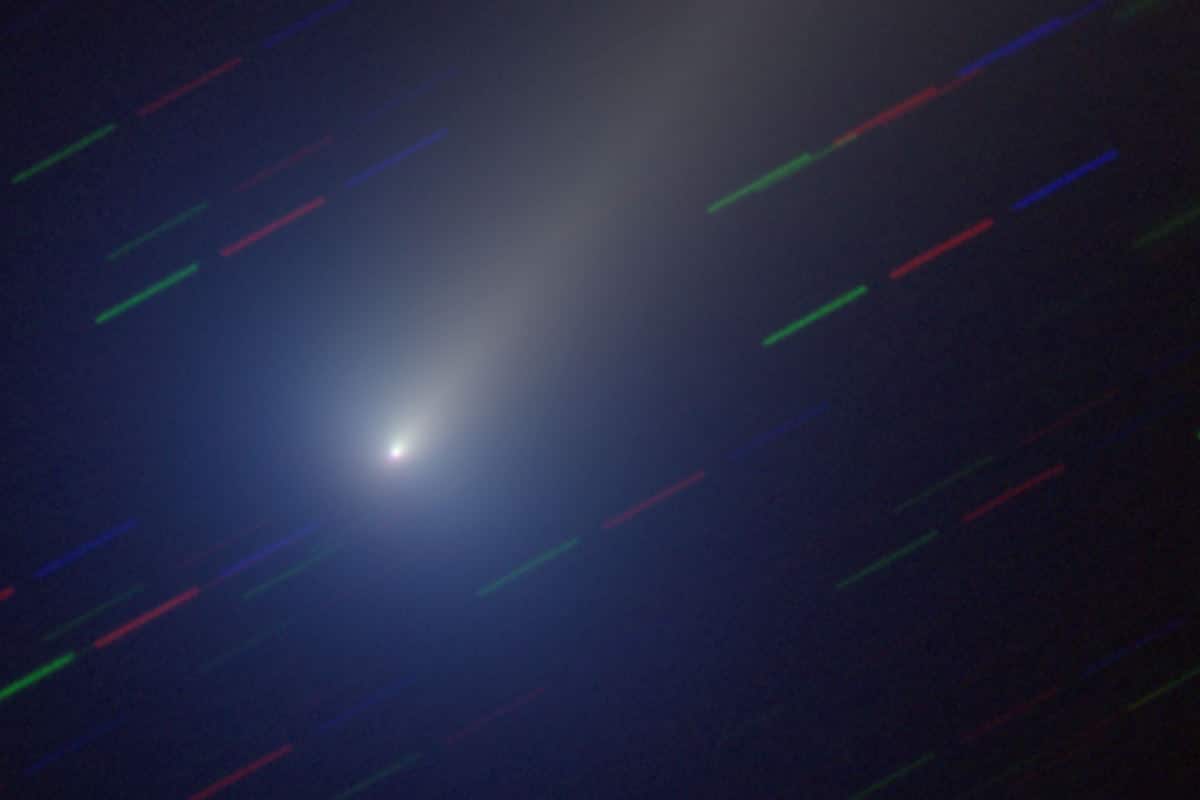
Astronomers are – fortunately – not so impressed by the comet passing by. But amateur astronomers have a wonderful week ahead of them!
Soon we can count on a visit from comet C/2021 A1, better known as comet Leonard. The comet will make its closest approach to Earth on Sunday, December 12. So close, in fact, that you can probably see the comet with the naked eye in the night sky. But rest assured, the comet poses no threat to Earth in any way.
Currently, we know of 3775 comets in the solar system. Comets are relatively small celestial bodies that whiz through our solar system. They are made up of ice, dust, and tiny rocky particles, and they can sometimes have crazy orbits around the sun. Comets often have tails. When the ice ball comes close to the sun or another star, it heats up. The ice in the comet sublimes (evaporates) and rushes away from the surface. In doing so, it carries light dust and debris particles with it. This creates a dust tail and coma (dusty atmosphere) so characteristic of comets. Then the comets return to distant corners of our solar system.
Comet Leonard is currently whizzing through our solar system at a hasty 47 kilometers per second. Astronomers have been eyeing the comet for some time now. Below you can see it showing off in a photo taken on December 7th.

Photo of Comet Leonard, spotted on December 7, 2021. Image:
ESA/NEOCC
As mentioned, the comet will come closest to our planet on December 12, although the distance from Earth will still be 35 million kilometers.
Near?
In cosmic terms, however, that is very close. This means that you can even see the comet with the naked eye in the days after. Astronomers are – fortunately – less impressed by it. Astronomers keep a close eye on such comets that occasionally skim by. That’s because comets – just like asteroids – can cause quite a bit of damage if they hit Earth. Fortunately, comets that venture close to Earth are very rare. At the moment there are only 100 so-called ‘Near Earth Comets’ known. And every year only one or two are added.

Comet Leonard’s orbit. It now travels to the sun, only to disappear again in the far corners of our solar system. Image: ESA
It means Comet Leonard poses no threat to Earth. “This is a bright comet that we see in the sky on average once a year,” said Marco Micheli of ESA’s Near-Earth Object Coordination Center. “If it gets a little closer, it can become visible to the naked eye, which makes for attractive photos. But fortunately for us concerned with objects that could pose a threat to Earth, this comet is unspectacular.”
Have a nice week
However, amateur astronomers can get ready for a nice week. Because thanks to cosmic coincidence you will soon not only be able to spot comet Leonard, but also see ‘shooting stars’ at the same time! The maximum of the Geminids meteor shower takes place on the night of Monday 13 to Tuesday 14 December. And the conditions are particularly favorable this year.
So keep an eye on the night sky this coming week. Because some beautiful nights are coming up. Comet Leonard is best viewed in the days following its closest approach (it is not easily visible at its closest point due to the bright sun). Have fun in advance!
Source material:
“Comet Leonard soon visible to naked eye?” – ESA
Image at the top of this article: ESA/NEOCC